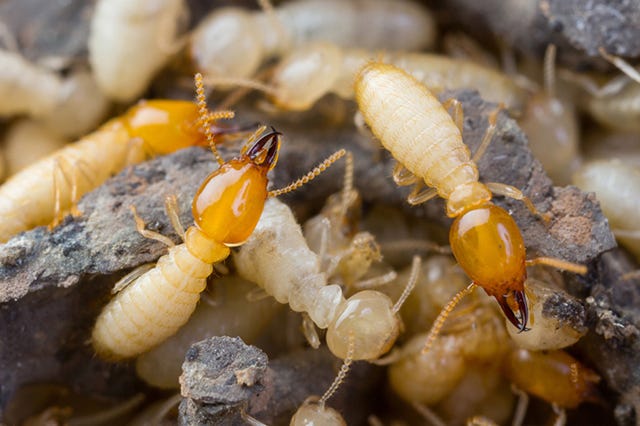Eco Bed Bug Exterminators Dc Fundamentals Explained
Eco Bed Bug Exterminators Dc Fundamentals Explained
Blog Article
Not known Facts About Eco Bed Bug Exterminators Dc
Table of ContentsEco Bed Bug Exterminators Dc - An OverviewSome Ideas on Eco Bed Bug Exterminators Dc You Should KnowSome Known Incorrect Statements About Eco Bed Bug Exterminators Dc Eco Bed Bug Exterminators Dc - An OverviewThe 15-Second Trick For Eco Bed Bug Exterminators Dc
Because pesticides are toxic, they are likewise potentially harmful to humans, animals, other organisms, and the environment. As a result, individuals that use chemicals or on a regular basis come in call with them must understand the loved one poisoning, potential health and wellness effects, and preventative steps to reduce direct exposure to the items they make use of. Threat, or danger, of using chemicals is the capacity for injury, or the degree of risk entailed in utilizing a pesticide under an offered collection of conditions.
Nonetheless, applicators can lessen or almost get rid of exposure-- and thus decrease threat-- by adhering to the tag directions, using personal safety garments and tools (PPE), and taking care of the chemical effectively. Even more than 95 percent of all chemical direct exposures come from dermal exposure, mostly to the hands and forearms. By using a set of unlined, chemical-resistant gloves, this sort of direct exposure can be virtually gotten rid of.
The damaging effects that happen from a solitary direct exposure by any type of route of entrance are called "intense impacts." The 4 routes of exposure are dermal (skin), inhalation (lungs), dental (mouth), and the eyes. Acute toxicity is determined by examining the facial poisoning, inhalation poisoning, and oral poisoning of guinea pig.
The Best Guide To Eco Bed Bug Exterminators Dc
Intense poisoning is gauged as the quantity or concentration of a toxicant-- the a.i.-- called for to kill half of the pets in an examination populace. This procedure is generally shared as the LD50 (lethal dosage 50) or the LC50 (deadly concentration 50). In addition, the LD50 and LC50 values are based upon a solitary dosage and are videotaped in milligrams of pesticide per kilo of body weight (mg/kg) of the examination pet or partly per million (ppm).
The reduced the LD50 or LC50 value of a chemical item, the better its poisoning to people and animals. Pesticides with a high LD50 are the least harmful to people if made use of according to the instructions on the item tag. The persistent toxicity of a pesticide is figured out by subjecting test pets to long-lasting direct exposure to the active component.
The chronic toxicity of a pesticide is harder than acute poisoning to identify through research laboratory evaluation. Products are categorized on the basis of their relative intense poisoning (their LD50 or LC50 values). Pesticides that are categorized as highly poisonous (Toxicity Classification I) on the basis of either oral, dermal, or breathing toxicity have to have the signal words risk and poisonous substance published in red with a skull and crossbones sign plainly presented on the front panel of the package label.
The acute (single dosage) dental LD50 for chemical items in this team ranges from a trace amount to 50 mg/kg. As an example, direct exposure of a few drops of a product taken orally could be deadly to a 150-pound person. Some pesticide products have simply the signal word threat, which tells you absolutely nothing regarding the severe toxicity, just that the product can cause severe eye damages or serious skin inflammation
All about Eco Bed Bug Exterminators Dc
In this group, the severe dental LD50 ranges from 50 to 500 mg/kg. A tsp to an ounce of this material might be deadly to a 150-pound person (bed bug heat treatment). Pesticide products categorized as either a little poisonous or relatively nontoxic (Toxicity Categories III and IV) are needed to have the signal word care on the chemical tag

All pesticide toxicity valuesPoisoning worths the LD50, can be found on the product's Item Safety Data Safety and security InformationMSDS). Pesticide tags and MSDS can be acquired from stores or makes - https://www.evernote.com/shard/s335/sh/93c443df-e209-f106-de19-eaaaf7d54355/06G3Zt54bkzw_7qSYY9_DW-9I9aqDvK5r4pWh7yIuDV2UpjkZcXnkoPjQw. The signs and symptoms of pesticide poisoning can range from a light skin irritation to coma or also fatality.
People additionally vary in their level of sensitivity to various levels of these chemicals. Some individuals might reveal no reaction to a direct exposure that might cause extreme ailment in others (exterminator DC). Since of possible wellness worries, pesticide users and handlers need to recognize the usual indicators and signs and symptoms of chemical poisoning. The impacts, or symptoms, of pesticide poisoning can be extensively specified as either topical or systemic.
Top Guidelines Of Eco Bed Bug Exterminators Dc
Dermatitis, or swelling of the skin, is accepted as the most frequently reported topical effect related to chemical direct exposure. Symptoms of dermatitis variety from reddening of the skin to rashes and/or blisters. Some people often tend to cough, wheeze, or sneeze when exposed to pesticide sprays. Some people respond to the solid smell and irritating results of petroleum extracts used as providers in pesticide items.
This symptom generally subsides within a couple of minutes after an individual is gotten rid of from the direct exposure to the toxic irritant. A response to a chemical product that causes somebody not only to sneeze and cough but likewise to create extreme intense respiratory system signs is more most likely to be a true hypersensitivity or sensitive response.
Systemic results are rather different from topical effects. They typically occur far from the initial factor of get in touch with as an outcome of the pesticide being taken in into and dispersed throughout the body. Systemic effects usually include nausea or vomiting, vomiting, exhaustion, migraine, and digestive disorders. In innovative poisoning situations, the person may experience adjustments in heart rate, difficulty breathing, convulsions, and coma, which might result in fatality.
Report this page